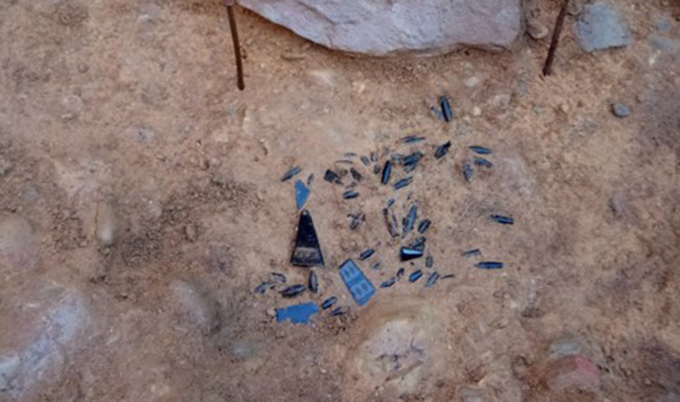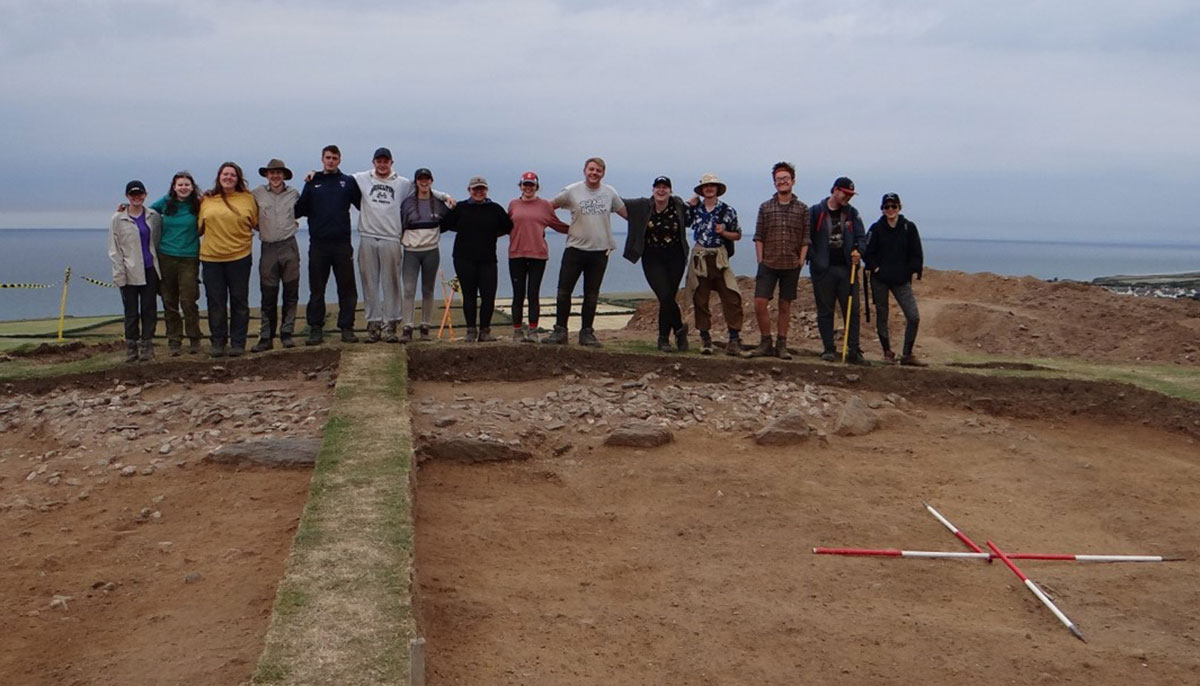Isle of Man round mounds
Rare prehistoric jewellery unearthed during excavations
Published on: 8 August 2019
Beads from a rare Bronze Age necklace have been discovered during an archaeological dig involving students from Newcastle University.
Important discovery
The excavation is part of the ongoing joint project between Newcastle University and the University of Leicester Round Mounds of the Isle of Man.
The necklace, made up of 122 beads, is made of jet which is likely to originate from Whitby, Yorkshire. It dates from c. 2200-1900 BC, and is the first to be found on the Isle of Man. Less than a hundred examples are known from Britain, most of which were found in Scotland.
The beads were found in a grave covered by a burial mound. The position of the surviving bones suggest the body was buried lying on one side in a foetal pose and was wearing the necklace at the time of burial.
Dr Chris Fowler, Head of Archaeology at Newcastle University and Project Director, said: "This intricate necklace is a good indicator of long distance contacts and interaction in the Early Bronze Age across the British Isles. Our project examines how burial practices and associated monuments in the Isle of Man developed in relation to those in the surrounding islands, so this kind of discovery is particularly important to us.”
Dr Rachel Crellin, Project Co-Director, University of Leicester, added: “This is an exceptional discovery but the real value of it lies in the excavation that led to it. Our careful excavation means we have lots of detailed records and data that will complement the application of scientific techniques to allow us to learn as much as possible about the necklace, the person who was buried with it, and the burial mound.”

Bringing archaeology to life
The excavation has also allowed archaeology students at Newcastle University and University of Leicester to get first-hand experience of archaeology, as well as providing volunteering opportunities for residents on the Isle of Man. So far more than 40 Newcastle University students have taken part in the Round Mounds excavation. One of them, Jonathon Graham, pictured above third from right, has taken part in all three seasons of excavation and was present as the burial and necklace were being excavated. Jonathon, who graduated with a First Class degree this July, said: "Working on this excavation has been a fantastic opportunity that has improved my fieldwork skills and brought Early Bronze Age archaeology to life.”
Over the last three years the project has also uncovered seven burials of Early Bronze Age cremated remains at this elaborate and well-preserved burial mound made of earth and stone at Berk Farm, Kirk Michael.
The results of the excavations will allow the team to understand the complex sequence of events in which the remains were buried and the mound built and repeatedly altered. The analysis of artefacts and palaeoenvironmental evidence recovered from the layers of the mound will also shed light on everyday activities where the soils used to build the mound were sourced.

Improved understanding
The excavation relies on the good will of the landowner, Professor Robert Cannell, an alumnus of Newcastle University and whose family has owned the land for several generations. Professor Cannell said: “We have often wondered if the mounds contained anything of archaeological interest. As current custodians of the land, we were delighted to cooperate with the archaeologists of Newcastle and Leicester Universities, especially as I had obtained my degrees at Newcastle University and my wife, Anne, qualified in physiotherapy at the RVI. The results have been beyond our expectations”.
The Round Mounds of the Isle of Man project has already involved analysis of aerial imagery, geophysical surveys at Bronze Age burial sites around the Island, examination of prehistoric archaeological records and human remains in the Manx Museum, and programmes of radiocarbon dating, ancient DNA analysis and stable isotope analysis.
It will result in a greatly enhanced understanding of life and death on the Isle of Man in the Neolithic and Early Bronze Age, and consider how burial practices and funerary monuments on the Isle of Man developed in relation to similar activities elsewhere in the British Isles. It has been funded by Manx National Heritage, Culture Vannin, Newcastle University and University of Leicester, and supported by the Isle of Man Steam Packet Company and Northern Archaeological Associates.



